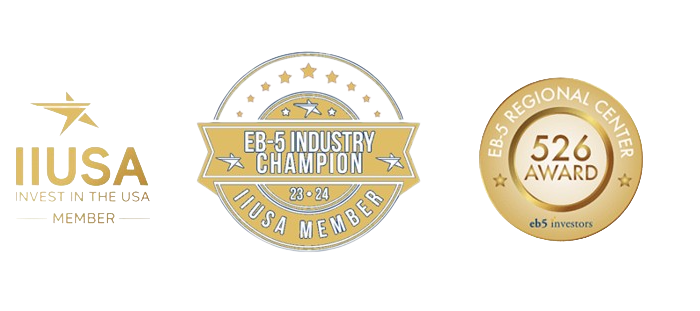- What is the EB-5 Immigrant Investor Program?
- What are the benefits of the Green Card?
- Who is eligible to receive permanent residency (Green Card)?
- Are EB-5 visas available to persons from any country in the world?
- Where can I find copies of relevant forms, laws, and regulations to study?
- What is the difference between a “conditional” and a “permanent” Green Card?
- What issue typically causes the most problems when applying for an EB-5 visa?
- How long must I remain in the United States each year?
- What is the difference between permanent residency and citizenship?
- What’s the best way to lower risk in an EB-5 Investment?
- What is a New Commercial Enterprise (NCE)?
- What is a Job Creating Entity (JCE)?
- What is visa retrogression?
- What are “Reserved EB-5 Visas” or “Set-Asides”?
- What are “Unreserved” EB-5 Visas?
- What is the Sustainment Period?
- What are the steps for processing an EB-5 visa application?
- If my I-526E petition is approved by the USCIS, what is the purpose of the Consulate application and interview, and how soon do I get my Green Card?
- After petition approval, can members of the family interview in different countries?
- What is an “escrow” account and when does the investor transfer the money into this account?
- How does the bank escrow account protect me against the risk of losing my money?
- What is Concurrent Filing for I-485 Adjustment of Status and how does it benefit EB-5 Investors?
- Who is eligible for Concurrent Filing?
- When can I apply for US citizenship?
- Do investors need to be actively involved in the day-to-day activities of Regional Center Projects?
- What are the advantages of investing in a rural project in a Micropolitan Area?
- May I invest less capital in a Targeted Employment Area (TEA) Project?
- Do I have to live where the project is?
- Can I make money with my EB-5 Investment?
- How is the EB-5 loan model different than the equity model?
- What is the minimum required amount of capital to be invested in order to apply for an EB-5 visa?
- Must I have previous business experience or education?
- Must I speak English?
- What is meant by the requirement that the investor’s assets be “lawfully gained”?
- If I want to move to the United States and invest in an EB-5 project with Houston EB5 Regional Center, do I have to live in Texas?
- Can an EB-5 investor from a retrogressed country apply for Concurrent Filing?
- How many direct and indirect jobs do I need?
- Can I travel outside the US for extended periods after I get my green card?
- What is a Regional Center and what advantages do they offer to EB-5 investors?
- Who should invest in an EB-5 Regional Center project?
- What are Indirect and Induced Jobs?
- Why is Job Creation safer with a Regional Center Project?
- Do I get faster Processing of my I-526E Immigrant Petition if I invest in a Regional Center project?
- What makes Houston EB5 unique?
What is an I-485 Petition?
Form I-485, officially titled “Application to Register Permanent Residence or Adjust Status”, is used by EB-5 investors to convert their legal status to that of a green card upon approval, if they are already in the U.S. The I-485 can also help EB-5 applicants whowish to remain in the U.S. while their I-526 or I-526E Petition is processed. Here are some key aspects of Form I-485:
- Purpose: The primary function of Form I-485 is to allow individuals currently in the United States to apply for lawful permanent residency without having to return to their home country to complete visa processing.
- Eligibility: To file an I-485 Form, an individual must be eligible for a green card through various means such as family sponsorship, employment, refugee or asylee status, or other special programs like the EB-5 investor program.
- Requirements: Applicants must provide evidence of their eligibility for permanent residency. In the case of an EB-5 Investor, it will be their I-526 Standalone Investor Petition or I-526E Regional Center Investor Petition.
- Adjustment of Status: Filing this form is referred to as “adjusting status,” which is different from obtaining a green card through consular processing (done outside the U.S.). Only individuals who are physically present in the U.S. on an eligible visa can file Form I-485.
- Concurrent Filing: Concurrent filing, especially beneficial for EB-5 investors, refers to filing Form I-485 simultaneously with the I-526E Petition under the EB-5 Reform and Integrity Act of 2022. This allows investors legally present in the U.S. to apply for adjustment of status alongside their EB-5 petitions, along with applying for work authorization (Form I-765) and a travel permit (Form I-131). This process can significantly expedite receiving employment authorization and travel permits, sometimes in as little as three months. Concurrent filing is particularly advantageous for visa holders on visas like H-1B, E-2, and F-1, enabling them to begin enjoying the benefits of permanent residency sooner at the same time as legally staying in the U.S. while their I-526 petition is processed. This option is more efficient than consular processing abroad and is crucial for those with expiring visas. However, it’s important to note that while holders of “dual intent” visas like H-1B or L-1 can file Form I-485 concurrently with their I-526 petition, those on “non-immigrant intent” visas should be cautious and consult with their immigration attorney before filing Form I-485.
- Processing Time and Interview: The processing time for Form I-485 can vary based on the individual case and the office handling it. The I-485 will not be processed until the EB-5 green card petition is approved.
- Result of Approval: Once approved, the applicant is granted lawful permanent resident status and will receive their green card, allowing them to live and work permanently in the United States.
Form I-485 is a vital step for EB-5 investors that would like to remain in the U.S. while their I-526 or I-526E Petition is processed.

